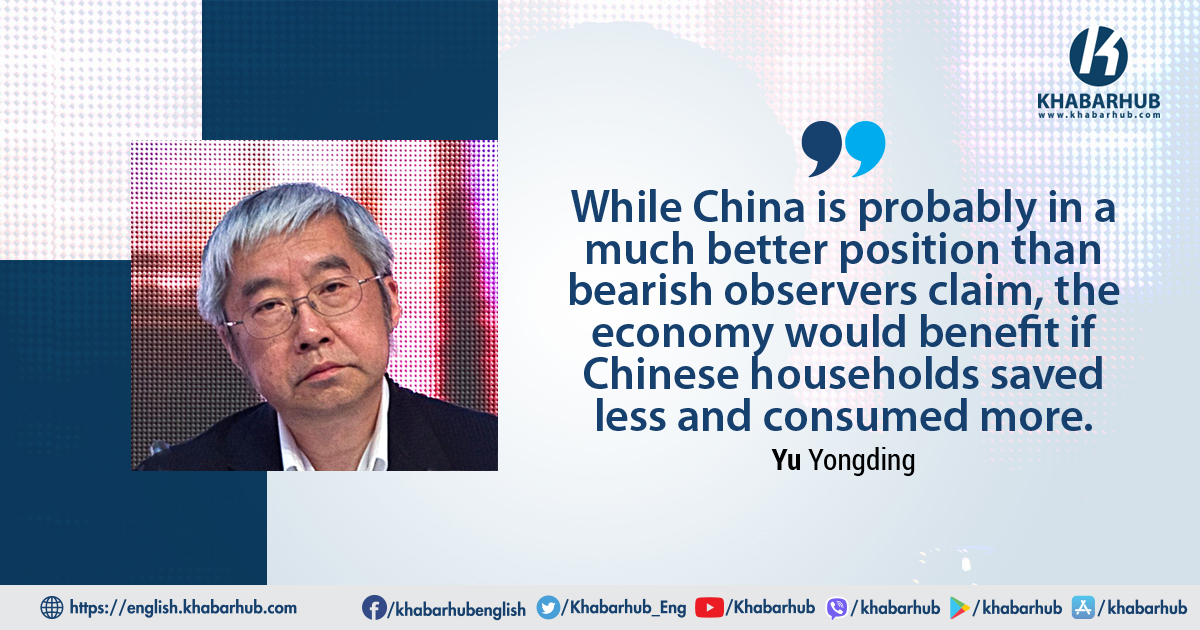Economists have lately been sounding the alarm that China’s economic development is teetering on the edge of a crisis.
The problem, they argue, is that China’s growth is driven by extremely high levels of capital investment, and that private consumption is being suppressed. Is a crisis really looming, as many predict?
It is true that China’s growth pattern could, for decades, be characterized as investment-driven.
Like most East Asian economies, China supported development by leveraging its high savings rate to maintain very high investment, and policymakers often used infrastructure spending as a countercyclical policy instrument.
In 2009, for example, China’s government introduced a CN¥4 trillion ($560 billion) stimulus plan, in order to offset the adverse effects of the 2008 global economic crisis.
By the end of that year, China’s rate of investment growth had surged to 30.1%, with total investment reaching 45% of GDP.
But China withdrew fiscal stimulus in 2011, in order to contain a swelling real-estate bubble and mitigate the threat of inflation.
Investment growth has fallen steadily ever since, amounting to just 3% last year, and has been consistently outpaced by GDP growth since 2017.
Today, domestic consumption has replaced investment as the main driver of economic growth.
Consumption contributed 82.5% to China’s GDP growth last year, whereas investment contributed 28.9%, and net exports acted as a drag on growth (-11.4%).
I see no fundamental difference between buying expensive consumer goods and buying a house in which to live, but the former is counted as consumption, and the latter as investment.
By my own calculation, consumption, investment, and net exports accounted for 54.7%, 42.8%, and 2.5% of GDP, respectively, in 2023.
To be sure, China’s final consumption expenditure is much lower than that of, say, the United States – 56% of GDP, compared to 81.5% of GDP, in 2019.
But the structure of consumption in the two countries is very different: services constitute less than 50% of final consumption in China, compared to two-thirds in the US.
Furthermore, services prices are much lower in China than in the US. After adjusting for the price difference, I found that, in 2022, total consumption expenditure on goods (including catering) in China was 37% of GDP, compared to 28% in the US.
In other words, when it comes to goods, China out-consumes the US (as a share of GDP).
Reinforcing this assessment, China’s consumer-loan-to-GDP ratio (not including mortgages) was 14% in 2022, roughly as high as the ratios in the US and Japan.
Then there is homeownership. Over the last several decades, Chinese households have spent a very large proportion of their incomes on housing purchases.
That is why the first step toward boosting domestic consumption is jump-starting growth, which requires a new wave of government-financed infrastructure investment.
As a result, China’s homeownership rate today is among the highest in the world. (China’s floor space per capita is also very high.)
I see no fundamental difference between buying expensive consumer goods and buying a house in which to live, but the former is counted as consumption, and the latter as investment.
And when it comes to real-estate investment, China’s rate is among the world’s highest (as a share of GDP).
This brings us to the savings rate. Critics are right that it remains high, but they tend to overestimate by how much.
It is widely believed that Chinese households’ disposable income amounted to just 40% of GDP last year.
But this figure is based on household survey data – collected and published by the China’s National Bureau of Statistics – which probably reflect a downward bias.
The NBS’s flow-of-funds table – which is published less often and gets less attention than the survey data – indicates that China’s household disposable income amounted to about 60% of GDP in 2019.
And there is good reason to think that this is the more accurate figure.
Notably, the share of total government revenues in GDP have hovered in the 20-30% range over the last decade – among the lowest rates among major economies.
Both government revenues and household disposable income cannot possibly represent such a small share of GDP.
So, China is probably in a much better position than the pessimists claim.
And while the economy would benefit if Chinese households saved less and consumed more, it will be very difficult to persuade them to do so as long as the threat of deflation looms, income growth is stagnant, and stock and housing prices are falling.
That means issuing even more bonds, while encouraging the PBOC to purchase yet more government bonds from the secondary market and lower interest rates further.
Consumption is, after all, a function of income, income expectations, and wealth.
That is why the first step toward boosting domestic consumption is jump-starting growth, which requires a new wave of government-financed infrastructure investment.
Fortunately, the Chinese authorities seem to be moving in the right direction.
The Ministry of Finance has announced plans to issue CN¥1 trillion in ultra-long-term treasury bonds this year – the first batch were issued last week – with more to be issued over the next several years.
It has also called on the People’s Bank of China (PBOC) to buy more government bonds via open market operations.
This bond issuance is a test case for China. If it is successful, the government might issue more bonds to finance infrastructure investment, in order to offset the adverse growth impact of slowing consumption growth and falling real-estate investment.
The government also needs to raise more money to stabilize the housing market and alleviate local governments’ debt burden.
If China is to have any hope of achieving its target of 5% GDP growth this year, a more expansionary fiscal and monetary policy is essential.
That means issuing even more bonds, while encouraging the PBOC to purchase yet more government bonds from the secondary market and lower interest rates further.
(Yu Yongding is a former president of the China Society of World Economics and director of the Institute of World Economics and Politics at the Chinese Academy of Social Sciences)
Copyright: Project Syndicate









Comment